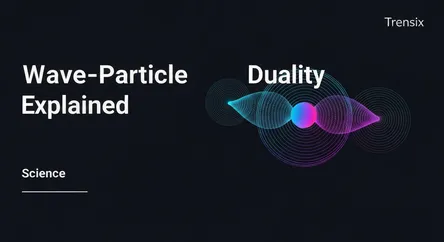Science
Wave-Particle Duality Explained

Discover the core principle of quantum mechanics where particles exhibit both wave and particle properties, underpinning much of modern technology.
What is it?
Wave-particle duality is a fundamental concept in quantum mechanics which posits that every elementary particle or quantum entity, such as a photon or electron, can exhibit the properties of both a particle and a wave. It expresses the inability of classical concepts to fully describe the behavior of objects at the quantum scale. For instance, the double-slit experiment shows that electrons, typically thought of as particles, can produce an interference pattern characteristic of waves. Conversely, the photoelectric effect demonstrates light's particle-like nature, where it acts as discrete packets of energy called photons. Which property is observed depends on the experimental setup.
Why is it trending?
This concept remains a cornerstone of modern physics, fundamentally altering our understanding of matter and reality. It challenges classical intuition and is essential for explaining phenomena at the microscopic level. The ongoing development of advanced technologies, especially in quantum computing, photonics, and materials science, relies heavily on a deep understanding of this principle. As scientists continue to explore the quantum realm, wave-particle duality remains a central and fascinating topic that highlights the profound and often counterintuitive nature of our universe, driving both theoretical research and practical innovation.
How does it affect people?
Although it seems abstract, wave-particle duality is the basis for numerous modern technologies. Lasers, semiconductors in computers, and LEDs all function based on quantum mechanics, where this duality is key. The wave nature of electrons is harnessed in electron microscopes, which allow scientists to see objects at the atomic scale. The particle nature of light (photons) is crucial for technologies like digital cameras and solar panels, which use the photoelectric effect to convert light into electrical signals. Its principles are also foundational for emerging fields like quantum computing, promising future technological revolutions.